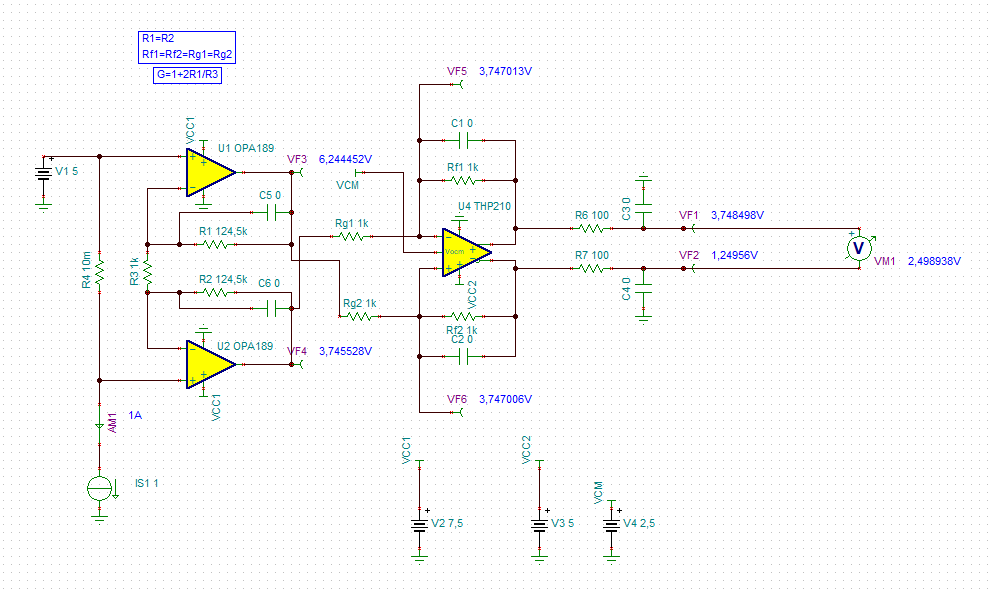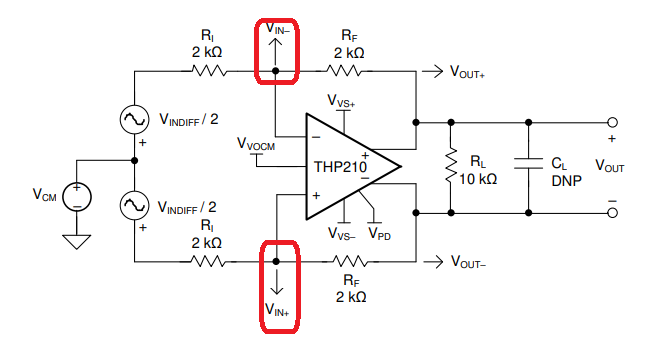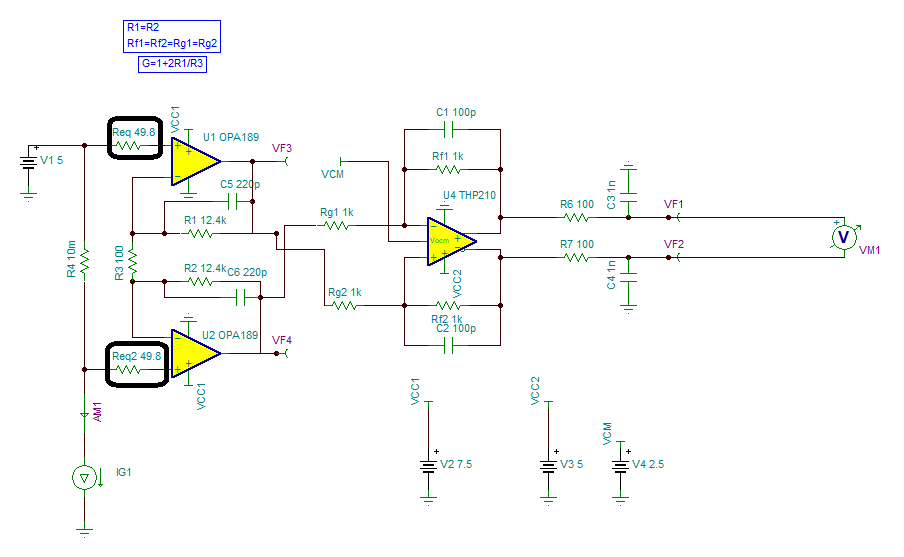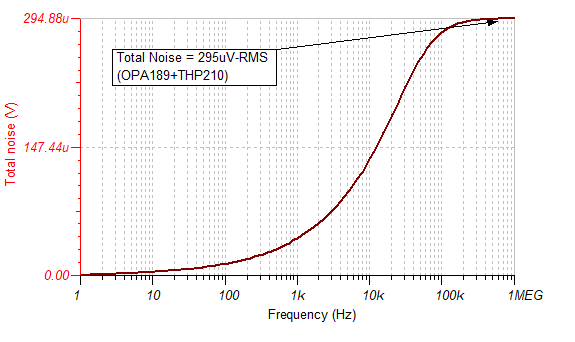Other Parts Discussed in Thread: OPA189, , ADS1261
Hi TI,
I am building a circuit to sense a current with requirements as below:
- Sensing current: 100uA-1A
- Input common mode voltage: 1V-5V.
-Output voltage swing: +/-2.5V (diff)
-Output common mode voltage: 2.5V
I start with TINA simulation (see picture)
I can see VF3 is bigger than VICM range of U4 (VVS– + 1 to VVS+ – 1) and even VCC2 when IS1>=1A. Is it OK? I can see it seem to be no problem in the simulation.
And how do you think about this circuit? Are there anything should to be noticed?
Thank you,






